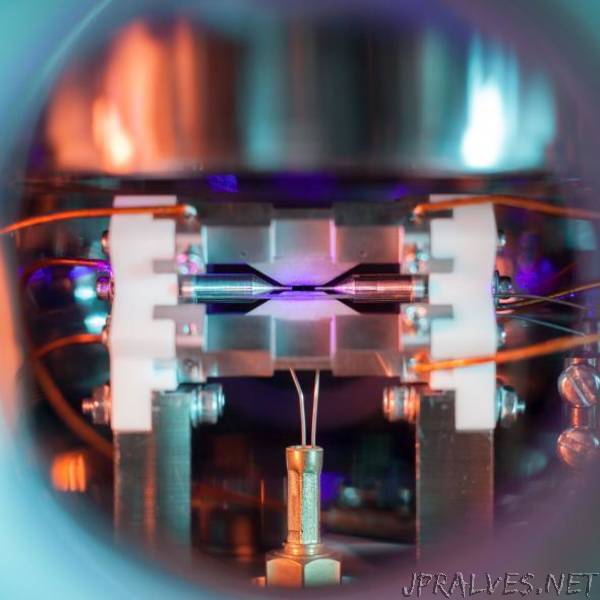
“The award-winning long-exposure photograph captures a positively charged atom suspended in an ion trap.
Sometimes, all it takes to capture a great photo is a DSLR camera, a microscopic atom, and a curious Ph.D. candidate.
David Nadlinger, who traps atoms for his quantum computing research at the University of Oxford, captured this image on August 7 using a standard DSLR camera. The photo shows a pinprick of a positively charged strontium atom illuminated by a blue-violet light on a black background. The atom is held nearly motionless by an electric field emanating from two metal electrodes placed on either side of it. The distance between the ion trap’s small needle tips is less than .08 of an inch.
The photograph, entitled “Single Atom in an Ion Trap,” won the overall science photography prize put on by the UK’s Engineering and Physical Sciences Research Council.
“The idea of being able to see a single atom with the naked eye had struck me as a wonderfully direct and visceral bridge between the miniscule quantum world and our macroscopic reality,” Nadlinger told the EPSRC in a press release. “When I set off to the lab with camera and tripods one quiet Sunday afternoon, I was rewarded with the particular picture of a small, pale blue dot.”
Nadlinger took the photo by peering through a window of the ion trap’s ultra-high vacuum chamber. He also used a 50 mm lens, extension tubes, and two flash units outfitted with color gels. Extension tubes are generally used for close-up photography.
Atoms are infinitesimally small, measuring only a miniscule fraction of an inch in diameter. At 38 protons and 215 billionths of a millimeter across, strontium atoms are relatively large by comparison. Still, the only reason why we can see the atom in the photo is because it absorbed and then re-emitted laser light at a speed capturable by a long camera exposure. So, the photo is actually of the laser light being re-emitted, rather than the outline of an atom. Without the long exposure effect, the atom wouldn’t be visible to the naked eye. (Related: “The God Particle”)
Nadlinger’s photo wasn’t the only one to win a prize at the competition. Other winning images included extreme close-ups of kitchen sink soap bubbles, a drug-coated microbubble, and a butterfly wing. A portrait of a volunteer testing out a brain activity headset also placed.”
